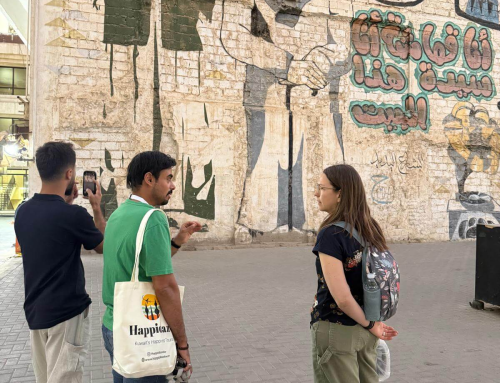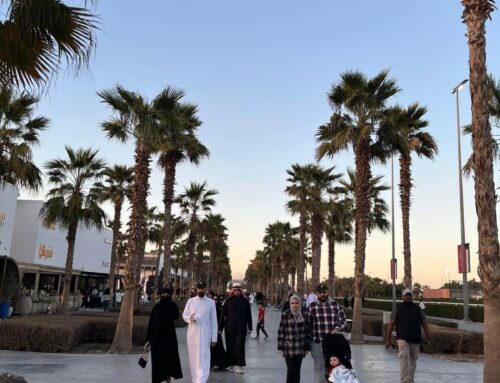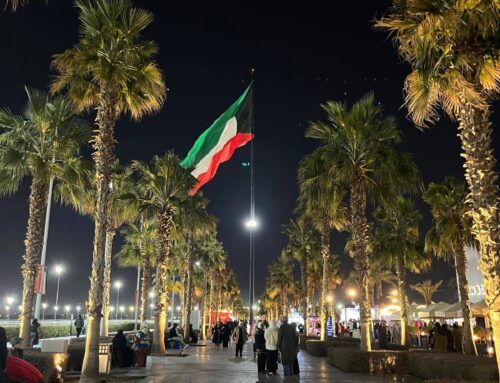A Global Journey Through Grilled Meat Traditions
Pack your appetite and join me on a sizzling adventure around the world, where fire meets flavor and every culture has its own delicious take on grilled meat.
There’s something primal about gathering around fire to cook meat. It’s perhaps humanity’s oldest culinary tradition, transcending borders, languages, and cultures. As we’ve wandered through bustling markets in Seoul, shared stories around a braai fire in Johannesburg, and savored smoky kebabs in Istanbul’s Grand Bazaar, we’ve discovered that while the essence remains the same, each culture has developed its own beautiful interpretation of this ancient art.
Whether you’re a seasoned traveler or planning your next culinary adventure, understanding these grilled meat traditions offers a delicious window into local culture. Let us take you on a journey through eight incredible grilling traditions that will have you booking flights and planning food tours.
The Universal Language of Fire and Meat
Before we dive into the specifics, it’s fascinating to observe what unites these diverse traditions. Across continents, grilling brings people together. It’s social cooking at its finest, from the communal nature of Chinese chuan to the weekend ritual of American backyard grilling. The equipment may vary from sophisticated tandoor ovens to simple charcoal braziers, but the heart remains the same: transforming raw ingredients through fire, smoke, and time.
Each tradition also emphasizes the quality of ingredients, though they express this differently. Whether it’s the premium beef cuts favored in Korean BBQ or the carefully spiced lamb in Middle Eastern kebabs, respect for the protein is universal. Marinades, rubs, and seasonings serve as cultural signatures, telling stories of trade routes, local ingredients, and generations of refinement.
South African Braai: The Soul of a Nation
Our first braai experience on a hunting trip in Johannesburg changed how I think about grilled meat forever. This isn’t just cooking, it’s a cultural institution that brings together people from all walks of life around the sacred fire.
The braai (pronounced “bry”) centers around the concept of “lekker”, that untranslatable Afrikaans word meaning something deliciously good. Traditional braai features boerewors (spiral sausages), lamb chops, chicken, and sosaties (marinated meat skewers), all cooked over wood. The key difference from other grilling traditions? Patience. A proper braai is never rushed. The fire is built hours before cooking begins, allowed to burn down to the perfect coals.
What struck us most was the social aspect. The braai master tends the fire while everyone gathers around, sharing stories and cold drinks. It’s a ritual that can last an entire afternoon, with the actual eating being just one part of a larger social experience.
The flavors are robust yet simple using just salt, pepper, and perhaps some Flippen Lekka seasoning. The meat speaks for itself, enhanced by the unique smokiness of indigenous woods like rooikrans or sekelbos. Unlike American BBQ with its complex sauces, braai celebrates the pure taste of quality meat kissed by smoke.


American BBQ: Regional Pride and Low-and-Slow Philosophy
American BBQ culture varies dramatically by region, but we’ll never forget my first taste of authentic Kansas City burnt ends or Carolina pulled pork. What unites American BBQ is the “low and slow” philosophy which is cooking tough cuts of meat at low temperatures for extended periods until they become tender enough to fall off the bone.
Each region has developed its signature style. Texas focuses on beef brisket with minimal seasoning, letting the meat and smoke do the talking. Kansas City embraces everything with sweet, molasses-based sauces. The Carolinas split between vinegar-based sauces (Eastern North Carolina) and mustard-based varieties (South Carolina), while Memphis keeps it simple with dry rubs and don’t forget about their chicken wings!
The equipment tells the story: massive offset smokers, kamado grills, and pellet smokers reflect American innovation and regional preferences. Unlike the quick-cooking methods of many other cultures, American BBQ is about transformation through time and temperature. For example, a proper brisket might smoke for 12-16 hours.
The social element revolves around competition and community. BBQ competitions are serious business, with pitmasters guarding their secrets while celebrating the craft. It’s both deeply personal and intensely communal with backyard gatherings, church fundraisers, and championship competitions all center around the shared appreciation of smoke-kissed meat.



Middle Eastern Kebabs: Ancient Techniques, Timeless Flavors
Walking through the spice markets of Istanbul or Dubai, you understand immediately that Middle Eastern kebabs are about much more than grilled meat. They’re edible history, carrying flavors from the ancient Silk Road.
The word “kebab” itself comes from Arabic, meaning “to burn” or “char,” and the technique is deceptively simple: cubed meat (usually lamb, but also beef or chicken) marinated in yogurt, olive oil, and aromatic spices, then grilled over high heat on metal skewers. The key is the marinade which typically features combinations of sumac, za’atar, cumin, coriander, and fresh herbs like parsley and mint.
What fascinated us during our travels through Kuwait and Saudi Arabia was how the cooking method emphasizes the char. Unlike slow-cooking traditions, kebabs are cooked quickly over very high heat, creating a beautiful contrast between the caramelized exterior and juicy interior. The meat is often served with flatbread, yogurt-based sauces, and fresh vegetables which is a complete meal that’s both satisfying and refreshing.
The social aspect centers around hospitality. Sharing kebabs is an act of welcome, often accompanied by endless glasses of tea and conversations that stretch long into the evening. Street vendors and family restaurants alike take pride in their spice blends, many passed down through generations.



Kuwaiti Shawarma: The Vertical Marvel
Our first glimpse of a proper shawarma spit rotating slowly in a Kuwait City restaurant window was mesmerizing with layers of marinated meat slowly cooking on a vertical rotisserie, creating one of the most ingenious grilling methods ever devised.
What makes shawarma unique among grilling techniques is the vertical rotisserie method. Thin layers of marinated meat are stacked on a vertical spit, creating a cone that can weigh up to 60 pounds. As the outer layer cooks and develops a beautiful char, it’s shaved off with a long knife, ensuring every serving combines perfectly cooked exterior with tender, juicy interior.
The Kuwaiti touch comes in the accompaniments and serving style. Unlike other Middle Eastern countries, Kuwaiti shawarma often includes a slightly sweet tahini-based sauce, pickled cucumbers, turnips, and carrots, and can be served with fragrant basmati rice rather than just bread.
The dining culture around shawarma in Kuwait reflects modern Gulf life: quick, accessible, but still social. Shawarma shops become gathering places during evening hours, where friends meet after work and families grab quick dinners. The communal aspect comes through sharing large platters and the ritual of watching the meat being carved fresh for each order.


Turkish Shish Tawook: Ottoman Elegance Meets Fire
Turkish shish tawook represents the sophisticated evolution of Ottoman palace cuisine adapted for the grill. During our culinary journey through Istanbul and Ankara, we discovered how Turkish cooks elevated simple grilled chicken into an art form that balances refinement with accessibility.
Unlike its Lebanese cousin, Turkish shish tawook emphasizes the interplay between smoke and subtle spicing. The chicken (typically thigh meat for its superior flavor and texture) is marinated in a mixture of yogurt, olive oil, lemon juice, and a carefully balanced spice blend featuring sweet paprika, oregano, thyme, and just a whisper of cinnamon. The Turkish approach favors longer marination times allowing the flavors to penetrate deeply.
The grilling technique showcases Turkish mastery of fire control. Using hardwood charcoal, the chicken is cooked over medium heat with careful attention to achieving an even golden color without charring. Turkish grill masters pride themselves on the “kiss of smoke” which is enough to add flavor without overwhelming the delicate chicken.
What distinguishes Turkish shish tawook is the accompaniment philosophy. Rather than heavy sauces, it’s served with cooling cacık (similar to tzatziki), grilled vegetables like tomatoes and peppers that cook alongside the meat, and warm pide bread. The meal emphasizes balance with the richness of perfectly grilled chicken offset by fresh, acidic, and cooling elements.
The social aspect reflects Turkish hospitality culture, where sharing food is an expression of friendship and respect. Shish tawook often anchors family gatherings and celebrations, served family-style with multiple accompaniments. The Turkish tea service that follows creates natural conversation breaks, extending the social experience well beyond the meal itself.


Indian Tandoori: Clay Oven Magic
While we haven’t been to northern India where Tandoori originated, we still love the flavor and understand why this technique has remained unchanged for centuries. The tandoor, a cylindrical clay oven, creates cooking conditions impossible to replicate with conventional grilling.
Tandoori cooking involves marinating meat (chicken, lamb, or fish) in yogurt mixed with spices like turmeric, cumin, coriander, garam masala, and cayenne pepper. The yogurt tenderizes the meat while the spices create complex layers of flavor and the characteristic red color (traditionally from Kashmiri red chilies, though many restaurants now use food coloring).
The magic happens in the tandoor, which reaches temperatures of 900°F (480°C). Meat is cooked on long metal skewers, suspended vertically in the oven. The intense heat cooks the exterior quickly while the interior remains juicy, and the clay walls impart a subtle earthiness impossible to achieve with metal grills.
What makes tandoori special is the balance of heat and cooling elements. The fiery spices are tempered by cooling yogurt marinades and served with mint chutneys and yogurt-based raitas. Fresh naan bread, cooked in the same tandoor, provides the perfect vehicle for the intensely flavored meat.
The dining experience emphasizes abundance and sharing. Tandoori platters often include multiple proteins and are sized for groups, encouraging communal dining and the Indian tradition of hospitality through food.
Chinese Chuan: Street Food Sophistication
Chinese chuan (pronounced “chwan”) might seem simple, small pieces of meat on bamboo skewers, grilled over charcoal, but this street food represents sophisticated flavor layering and technique refinement.
During food adventures in Beijing and Xi’an, we discovered that chuan is all about the interplay of fat and lean meat. Lamb is traditional, cut to include both fatty and lean portions on each skewer. The fat bastes the lean meat during cooking while creating incredible texture contrasts.
The seasoning is deceptively complex with cumin and chili pepper forming the base, but each vendor adds their signature touches. Some include Sichuan peppercorns for numbing heat, others add five-spice powder or sesame seeds. The spices are applied both before and during cooking, creating layers of flavor.
Chinese grilling technique emphasizes high heat and constant attention. The skewers are turned frequently, and spices are reapplied during cooking. This creates an intensely flavored exterior while maintaining tender interiors.
The social aspect revolves around street food culture. Chuan is eaten casually while standing at street stalls or a nice sit down dinner as it’s deeply embedded in urban Chinese social life.


Korean BBQ: Interactive Dining Excellence
Korean BBQ transformed our understanding of grilled meat as a social experience. Unlike other traditions where one person does the cooking, Korean BBQ makes every diner a participant in the cooking process.
The technique centers around high-quality cuts like galbi (short ribs), bulgogi (thinly sliced ribeye), and samgyeopsal (pork belly) which are cooked on tabletop grills. Marinades vary from sweet soy-based mixtures for bulgogi to simple salt for samgyeopsal, but the focus remains on premium ingredients.
What makes Korean BBQ unique is the accompaniments. Banchan (small side dishes) including kimchi, pickled vegetables, and seasoned greens provide cooling, acidic counterpoints to rich grilled meats. The meat is typically wrapped in lettuce leaves with rice, sauce, and vegetables which creates the perfect bite-sized packages.
The dining experience is intensely social and interactive. Everyone participates in cooking, sharing, and creating their perfect bites. Conversations flow naturally around the shared cooking process, and meals often stretch for hours. The Korean concept of “jeong” which is a deep emotional connection through shared experiences, is perfectly embodied in BBQ dining.
Korean grilling also emphasizes balance. For example rich meats are paired with fresh vegetables, spicy kimchi provides contrast to sweet marinades, and the variety of banchan ensures each bite can be different from the last.
The Common Threads That Bind Us
As we reflect on these incredible grilling traditions, several universal truths emerge. First, grilled meat is never just about the food. It’s about community, tradition, and sharing. Whether you’re around a braai fire in South Africa or a Korean BBQ table in Seoul, the act of cooking and eating together creates bonds that transcend language barriers.
Second, each tradition reflects its environment and available ingredients. The robust flavors of Turkish shish tawook reflect the spice trade routes, while the cooling elements in Indian tandoori respond to the subcontinent’s heat. Korean BBQ’s interactive nature mirrors the culture’s emphasis on group harmony, while American BBQ’s competitive spirit reflects cultural values of individual achievement within community celebration.
Third, technique matters immensely, but it serves the larger purpose of bringing people together. Whether it’s the patient coal-building of a South African braai or the precise timing of Chinese chuan, mastery of technique becomes a form of hospitality. It’s all a way of showing care and respect for those who will share the meal.
Planning Your Grilled Meat Adventure
For the travel-hungry reader planning their next culinary adventure, each of these traditions offers unique opportunities. South Africa provides the chance to experience grilling as cultural immersion, make sure to experience a traditional braai. American BBQ regions offer food festival circuits that can anchor entire travel itineraries like planning your visit around events like Memphis in May or the Kansas City Royal.
Middle Eastern countries provide opportunities to experience grilling as part of larger cultural exploration. Take cooking classes in Kuwait or Turkey to learn the spice combinations and techniques. India offers the chance to see tandooor cooking in action and understand its role in broader Indian hospitality culture.
China’s street food scene provides endless opportunities for chuan exploration, particularly in cities like Beijing and Xi’an where food tours can guide you to the best vendors. Korea’s BBQ culture integrates beautifully with broader cultural experiences with many restaurants offering traditional seating and cultural performances alongside meals.
The Universal Fire
As travelers and food lovers, we’re fortunate to live in a world where these traditions continue to thrive while also adapting and spreading globally. You can find excellent Korean BBQ in Los Angeles, authentic braai in London, and tandoori techniques in fusion restaurants worldwide. Yet nothing replaces experiencing these traditions in their home environments, where they’re embedded in daily life and cultural celebration.
The next time you plan a trip, consider organizing part of your itinerary around these grilling traditions. Book that cooking class, seek out the local BBQ joint recommended by cab drivers, or accept that invitation to a family braai. These experiences offer more than just great meals. They provide insight into how cultures express hospitality, community, and identity through the ancient act of cooking meat over fire.
Whether you’re a seasoned traveler or just beginning to explore the world through food, these grilling traditions offer delicious entry points into deeper cultural understanding. Pack your appetite, bring your curiosity, and prepare to discover how eight different cultures have perfected the art of turning fire, meat, and time into unforgettable experiences.
The fire is waiting. The adventure begins with your first bite.
Discover more from Penley Perspective
Subscribe to get the latest posts sent to your email.





Great blog on the meat traditions of the world. When I traveled the rural areas of Brazil and Argentina it was amazing the weekend traditions of Barbeque taking all day to cook numerous kinds of meat.